
BARREL BROTHERS
Reviewing, sharing, and comparing whiskey for the masses
- Jan 15, 2021

Review #22 Jefferson's Ocean Aged at Sea Voyage 20
Updated: Feb 18, 2021
Distillery : Sourced
Mashbill : Undisclosed
BACKGROUND : Inspired by the original Jefferson's Ocean, which was new-filled bourbon barrels, the Jefferson's Ocean: Aged at Sea takes older bourbon barrels and brings it around the world stopping in 5 different continents and crossing the equator 4 times. Jefferson's ocean-aged bourbon is released in small batches that can range from wheated to ryed to cask strength. Voyage 20 is a blend of rye based straight bourbon whiskey.
NOSE : Rich scents of molasses, maple, caramel, and oak waft up from the glass. There were hints of rye spice here and there as well. (21/25)
PALATE : Jefferson's Ocean bourbon was incredibly smooth and balanced. As soon as the whiskey touched out mouth you're greeted by sweet vanilla, baking spices, oak, honey, and toffee. The whiskey was incredibly smooth, balanced and easy to drink. (35/40)
FINISH : The finish on Jefferson's Ocean is very oily, balanced, and long. There are strong flavors of oak, tannins, leather, cracked pepper, and rye spice. (22/25)
VALUE : Jefferson's Ocean carries a higher SRP of $70. In our opinion that’s quite high. I would say this bottle should sit around $50-55 (7/10)
Overall : 85/100
FINAL THOUGHTS : This is an incredibly smooth and enjoyable whiskey. I would recommend this to everyone as it has great flavor, is readily available, and not absurdly expensive! Jefferson's Ocean is an excellent whiskey to keep as a special occasions whiskey without feeling guilty for how much you spent.
Similar & Slightly Better Whiskey : Weller Antique 107
Similar & Equal Whiskey : Russell's Reserve 10 Year
Similar & Slightly Worse Whiskey : Henry McKenna 10 Year
Tell us what you think and give us some feedback on our page!
Scoring Legend:
96-100: The perfect dram, juice of the gods
90-95: Near perfect, truly incredible whiskey
85-89: Amazing whiskey, will always try to keep a backup bottle of this
80-84: Very good, some minor flaws here or there
75-79: Good, quite enjoyable to drink, Will try and keep a bottle on the shelf
70-74: Solid, wouldn’t go out of my way to get this
60-69: Decent, would offer this up to non whiskey drinkers
50-59: Not my cup of tea
Below 50: Give away

- Whiskey Reviews
Recent Posts
Review #247: Woodford Reserve Straight Wheat Whiskey
Review #246 Larceny Barrel Proof C921
Review #245 Wild Turkey Rare Breed (Revisited)

Jefferson’s Ocean – Voyage 20
Explore the journey on the interactive map starting from the port of savannah, georgia, hover over the icons above to explore the voyage route.
SHARE THIS VOYAGE
Captain’s log.
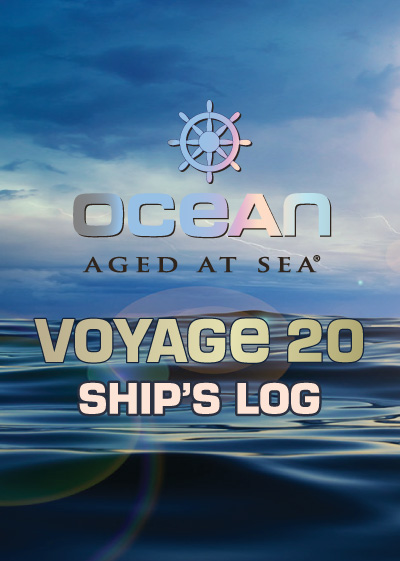
Traffic was light in the Canal and while the humidity was up, the temperature held to the mid 80’s. Pulling away from the locks at Balboa and entering the Pacific Ocean, the typhoon season was already three months under way. A season unlike the Atlantic Hurricane season that extends over a 6-7 month period, typhoons in the Pacific can occur at any time throughout the year.
OCEAN Voyage 20 was headed south towards the Equator and the storm activity was well to the north. Crossing the Equator, the seasons switched from spring to autumn. Seas were slight, skies were clear, the temperature remained a balmy 85° and the ocean continued to sparkle like liquid gold. With the exception of a rough spot during our run between Melbourne and Fremantle, Voyage 20 had smooth sailing up and around the Pacific Rim, back through the Caribbean, up the east coast of the U.S. and in and out of the North Atlantic. As we docked at 7:40 A.M. in Savannah, the sun had risen over a still and golden sea; just as it had upon departure. Steady temperatures and gentle seas had a mellowing effect on the crew and the Bourbon of OCEAN Voyage 20 and you can experience its golden glow neat or shimmering over an ice cube or two.
Jefferson's Bourbon
You must be 21 years old to visit this site..
- Share full article
Advertisement
Supported by
NASA Reaches Voyager 2 With a Last-Ditch ‘Shout’ Across the Void
After an erroneous command sent the spacecraft’s antenna askew, mission specialists hatched a plan to point it back toward Earth.

By Katrina Miller
It took an interstellar “shout” across the solar system. But NASA’s Jet Propulsion Laboratory said on Friday that it re-established full communications with Voyager 2, an aging probe exploring the outer edges of the solar system.
“After two weeks of not hearing anything, we’re back to getting unique data from the interstellar medium,” said Linda Spilker, a planetary scientist at the Jet Propulsion Laboratory and the lead mission scientist for Voyager 2.
The space agency lost contact with Voyager 2 on July 21 when the mission team accidentally sent a command that pushed the spacecraft’s antenna two degrees away from Earth. On Tuesday morning, officials from the Deep Space Network, a worldwide system of radio dishes NASA uses to communicate with various space probes, detected a carrier signal known as a heartbeat from Voyager 2. It was too faint to extract any data, but enough to confirm that the mission was still operating.
Nonetheless, being able to pick up only the heartbeat “was upsetting and worrisome,” said Suzanne Dodd, the project manager for Voyager 2.
The mission team hatched a plan to send a command on Wednesday reorienting Voyager 2’s antenna back to Earth, using a Deep Space Network radio dish in Canberra, Australia.
The chances of success were slim, according to a spokeswoman at the Jet Propulsion Laboratory. It took 37 hours to know whether the attempt was successful — 18.5 hours for the signal to make it to Voyager 2, and another 18.5 for the data to return.
Ms. Dodd said the waiting period “was pretty nervewracking. You don’t sleep well.”
Scientists, engineers and the flight team were “waiting on pins and needles to hear back from Voyager 2, to see if the command was successful,” Dr. Spilker said. “It was all hands on deck.”
But it worked: On Friday at 12:29 a.m. Eastern time, Voyager 2 began transmitting science data once again. Scientists also confirmed that the probe remained on its original path.
According to Dr. Spilker, mission control in California reacted to the good news with a lot of high fives, tears and sighs of relief.
Voyager 2 launched to space on Aug. 20, 1977, to fly by the solar system’s outer planets and then explore the interstellar space that lies beyond it. The nearly 46-year-old probe is currently more than 12.5 billion miles away from Earth and is collecting data on the distant region of space for scientists to study. Its twin, Voyager 1, was launched weeks after Voyager 2 and became the first to cross the solar system’s boundary.
Had it not established contact, the mission team would have had to wait until Oct. 15, when Voyager 2 is programmed to do an automatic reset of the direction of its antenna.
But it no longer needs to wait, and the mission has resumed data transmissions from beyond the solar system’s heliosphere.
“We did an assessment and the spacecraft looks very healthy, very normal,” Ms. Dodd said. The mission team will continue to run tests to fully understand the status of the spacecraft before resuming regular activity.
Ms. Dodd looks forward to celebrating the probe’s launch anniversary later this month. “Both of these spacecraft are truly remarkable in their longevity,” she said, referring to Voyager 2 and Voyager 1. “They’re like the spacecraft with nine lives.”
Katrina Miller is a science reporting fellow for The Times. She recently earned her Ph.D. in particle physics from the University of Chicago. More about Katrina Miller
What’s Up in Space and Astronomy
Keep track of things going on in our solar system and all around the universe..
Never miss an eclipse, a meteor shower, a rocket launch or any other 2024 event that’s out of this world with our space and astronomy calendar .
Scientists may have discovered a major flaw in their understanding of dark energy, a mysterious cosmic force . That could be good news for the fate of the universe.
A new set of computer simulations, which take into account the effects of stars moving past our solar system, has effectively made it harder to predict Earth’s future and reconstruct its past.
Dante Lauretta, the planetary scientist who led the OSIRIS-REx mission to retrieve a handful of space dust , discusses his next final frontier.
A nova named T Coronae Borealis lit up the night about 80 years ago. Astronomers say it’s expected to put on another show in the coming months.
Is Pluto a planet? And what is a planet, anyway? Test your knowledge here .
VoyagerNAS 3.0 combines the powerful compute capabilities of VoyagerVM 3.0 with a removable eight bay SATA/SAS cassette.
Ingest data at 10Gbps and use the in-built compute to process it, all in a single box.

VoyagerNAS 3.0
Key features.
- Intel® Xeon® Processor D-1539 Broadwell-DE 8-Core Processor, with up to 96GB of RAM
- Removable NVMe Voyager Ignition Key (VIK+)
- Supporting RAID Levels 0, 1, 10, 5, 50, 6, 60.
- Removable 8-drive cassette with SAS / SATA support, each with 12Gb/s or 6Gb/s respectively
- Support for an additional eight SSDs via two Mini-SAS HD connectors
- Supercap option for battery-backed cache
- Self-encrypting drive support
- Supported across three Voyager module slots in either Voyager 8 or Voyager 8+ chassis
Go to Automotive >
Discover more, privacy overview.
VOYAGER 20 Detailed Review
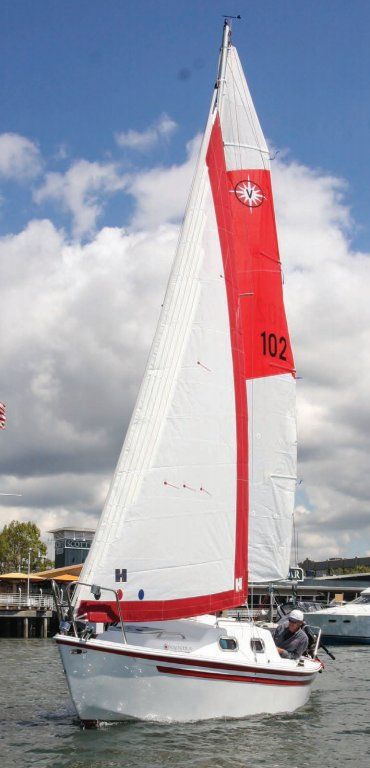
If you are a boat enthusiast looking to get more information on specs, built, make, etc. of different boats, then here is a complete review of VOYAGER 20. Built by International Marine (USA) and designed by Herb Stewart, the boat was first built in 2013. It has a hull type of Keel/Cbrd. and LOA is 6.25. Its sail area/displacement ratio 16.85. Its auxiliary power tank, manufactured by undefined, runs on undefined.
VOYAGER 20 has retained its value as a result of superior building, a solid reputation, and a devoted owner base. Read on to find out more about VOYAGER 20 and decide if it is a fit for your boating needs.
Boat Information
Boat specifications, sail boat calculation, contributions, who designed the voyager 20.
VOYAGER 20 was designed by Herb Stewart.
Who builds VOYAGER 20?
VOYAGER 20 is built by International Marine (USA).
When was VOYAGER 20 first built?
VOYAGER 20 was first built in 2013.
How long is VOYAGER 20?
VOYAGER 20 is 5.33 m in length.
Member Boats at HarborMoor

- Search forums
- Forum Rules
- TrueNAS Community SLA
- Need Help Logging In?
Important Announcement for The TrueNAS Community.
- News and Announcements
- Announcements
TrueNAS SCALE: The voyage begins with version 20.10
- Thread starter Kris Moore
- Start date Oct 16, 2020
- Oct 19, 2020
EXT4 boot devices would be preferred for my use case since the bare metal server hosting service does not have PXE booted remote rescue tools for ZFS yet. At the moment I just use SMB server running on Ubuntu with SSH management, but TrueNAS web management would be way nicer.
horizonbrave
- Oct 20, 2020
Please could you define the "industry-standard servers" which will support HCI (hyper convergence)? Maaaaaaany of us won't be able to afford, economically and logistically (non-US residents), a R-Series system but as you know already run Truenas on server grade hardware. Thank you PS some of us "cheap pockets" wouldn't mind paying for a subscription model, so that we can at least give a "small" economical contribute back ;)
Captain Morgan
- Oct 21, 2020
horizonbrave said: Please could you define the "industry-standard servers" which will support HCI (hyper convergence)? Maaaaaaany of us won't be able to afford, economically and logistically (non-US residents), a R-Series system but as you know already run Truenas on server grade hardware. Thank you PS some of us "cheap pockets" wouldn't mind paying for a subscription model, so that we can at least give a "small" economical contribute back ;) Click to expand...
morganL said: The same hardware that runs TrueNAS CORE will run TrueNAS SCALE for free. The primary difference is that multinode clusters will need a high bandwidth interconnect network. 10Gbe will work, but 100Gbe is better. Click to expand...
Mlovelace said: When I read multinode clusters with high bandwidth interconnect, I start thinking iWARP or RoCE. Any plans to include Debian's RDMA-core so users can leverage it? Click to expand...
- Oct 22, 2020
Just came to say: Thanks for the nice christmas present! December release should be my sweetspot to dip my toes in the water.. :)
SVP of Engineering
stele77 said: Just came to say: Thanks for the nice christmas present! December release should be my sweetspot to dip my toes in the water.. :) Click to expand...
- Oct 25, 2020
Kris Moore said: S cale-Out ZFS: Capacity & Performance Click to expand...
Yes, if you grow beyond a single system, you'll be able to cluster and add 1-2+ systems to the pool to grow further.
- Dec 5, 2020
Patrick M. Hausen
Hall of famer.
As long as you stick to two nodes you can always drop the switch - true for every clustering solution - the nodes won't notice if there is a switch inbetween or just a cable/fibre.
Patrick M. Hausen said: As long as you stick to two nodes you can always drop the switch - true for every clustering solution - the nodes won't notice if there is a switch inbetween or just a cable/fibre. Click to expand...
The speed of the network needed depends on the speed of the cluster. It's possible to network with 10Gbe, but 100Gbe is preferred for performance. We've tested with Chelsio and Mellanox, but don't expect any major problems with other NICs. Linux has strong driver support.
- Dec 6, 2020
morganL said: The speed of the network needed depends on the speed of the cluster. It's possible to network with 10Gbe, but 100Gbe is preferred for performance. We've tested with Chelsio and Mellanox, but don't expect any major problems with other NICs. Linux has strong driver support. Click to expand...
- Dec 16, 2020
- Dec 17, 2020
Kris Moore said: { "lightbox_close": "Close", "lightbox_next": "Next", "lightbox_previous": "Previous", "lightbox_error": "The requested content cannot be loaded. Please try again later.", "lightbox_start_slideshow": "Start slideshow", "lightbox_stop_slideshow": "Stop slideshow", "lightbox_full_screen": "Full screen", "lightbox_thumbnails": "Thumbnails", "lightbox_download": "Download", "lightbox_share": "Share", "lightbox_zoom": "Zoom", "lightbox_new_window": "New window", "lightbox_toggle_sidebar": "Toggle sidebar" } After a very successful development cycle with 200+ trial users, the first version of TrueNAS SCALE is now available . As our initial community post and blog on SCALE indicated, TrueNAS SCALE is defined by its acronym: S cale-Out ZFS: Capacity & Performance C onverged compute and storage A ctive-Active reliability L inux containers; Docker, K8s, and KVM E asy Setup & Management TrueNAS starts from the TrueNAS 12.0 base which includes OpenZFS 2.0, all the storage services, the middleware to coordinate these, and the web UI to present a user-oriented view of the system. This base has been tested by hundreds of thousands of users over the last few years. The new capabilities being added are based on Debian Linux and these define the new opportunities for SCALE: KVM Virtualization: Mature Hypervisor with good reliability, Guest OS support, and Enterprise features. Kubernetes: Applications can be single (docker) containers or “pods” of containers. Scale-out ZFS: SCALE will enable datasets to be defined as ZFS datasets or cluster datasets which span multiple nodes and ZFS pools. Cluster datasets will have a variety of redundancy properties and still support ZFS snapshots. Unlike other Hyperconverged Infrastructure solutions, TrueNAS SCALE will have deployment benefits as a single node, a dual-node “HA” system, or as a cluster of multiple nodes. Start with a single node system and in the future, you will be able to scale-out. The high level release plan follows this process. Typical Use Case TrueNAS SCALE Tag Target Date Developers NIGHTLY June 2020 Testers NIGHTLY August 2020 Enthusiasts (1 Node) ALPHA October 2020 Enthusiasts (Cluster) BETA December 2020 Home Users RC Q1 2021 Business Users RELEASE Q2 2021 “ANGELFISH” Angelfish is the codename for the feature set described by a set of feature groups. Each “feature group” is described as either PREVIEW, ALPHA, BETA, RC, or RELEASE quality. This first version is called TrueNAS SCALE 20.10 (Angelfish) and is described as follows: Feature Groups Quality Debian Linux RELEASE Open ZFS 2.0 RC TrueNAS Middleware and REST API BETA TrueNAS WebUI (new features) ALPHA NFS, SMB, AFP, iSCSI, S3, WebDAV BETA KVM Virtualization BETA Kubernetes and Docker Containers PREVIEW Cluster Datasets PREVIEW Users should read the release notes to confirm support for their particular use case. KVM has little testing by this community at this point but is widely used elsewhere. Kubernetes is based on stable, released code (k3s), but the WebUI and Middleware are PREVIEW quality. Cluster datasets require some additional TrueCommand features (expected in TrueCommand 2.0 - November) to provide an easy-to-use WebUI to manage them. In the meantime, the CLI and APIs can be tested, and this feature group also has PREVIEW status. The UI, while similar to TrueNAS CORE, has also been improved with some new UX enhancements across the networking and settings sub-sections. Further UX improvements are expected to arrive later this year. We appreciate the community feedback and bug reports and hope to get all those features to RELEASE quality faster. A special thanks also goes to the large number of community members who joined the development and test team. We’ve really enjoyed your contributions and teamwork and it has greatly contributed to the accelerated development process. We look forward to a continued engagement and a few drinks at some point (physically or virtually). Is TrueNAS SCALE for Users or Developers? Out of the gate, TrueNAS SCALE is primarily for developers and bug hunters and can be downloaded here . For Linux developers, there are many opportunities to contribute to the Open Source TrueNAS SCALE project . We have made it a very well coordinated and managed environment to develop the best Open Hyperconverged Infrastructure. For more information, see this Community post . This TrueNAS SCALE 20.10 version is also intended for tech-savvy enthusiasts who have a single node, a backup plan, and a willingness to resolve any issues they find. The 20.12 version to be released in December is intended for multi-node expansion. In 2021, TrueNAS SCALE is expected to get to full RELEASE quality for a clustered system. It will be able to run on High Availability (HA) X-Series and M-Series systems, as well as industry-standard servers. If you have any additional questions or need advice on a new project, please email us at [email protected] . We are standing by to help. Click to expand...
- Dec 18, 2020
Yes, 20.12 will be available before Christmas..
- Mar 4, 2021
Dan Tudora said: ya, ya but what developers do not inspire/copy a logical manner if is works well you must stay in 1 foot (on the left of course) and scratch in the left ear with RIGHT hand from 3 to 3 second to work something for that is ALPHA, BETA and other things. TO tell developers what we think about they works Click to expand...
Contributor
- Mar 11, 2021
can this be installed on a normal flash drive/sd card or is not not recommended?
Server Wrangler
It's as recommended as for any vaguely modern version of FreeNAS/TrueNAS (i.e. not recommended).
Similar threads
- Feb 16, 2021
- Sep 4, 2020
- TrueNAS SCALE
- Feb 21, 2023
- DeletedUser67652
- Aug 9, 2022
- This site uses cookies to help personalise content, tailor your experience and to keep you logged in if you register. By continuing to use this site, you are consenting to our use of cookies. Accept Learn more…

First to visit all four giant planets

Voyager 2 is the only spacecraft to visit Uranus and Neptune. The probe is now in interstellar space, the region outside the heliopause, or the bubble of energetic particles and magnetic fields from the Sun.
Mission Type
What is Voyager 2?
NASA's Voyager 2 is the second spacecraft to enter interstellar space. On Dec. 10, 2018, the spacecraft joined its twin – Voyager 1 – as the only human-made objects to enter the space between the stars.
- Voyager 2 is the only spacecraft to study all four of the solar system's giant planets at close range.
- Voyager 2 discovered a 14th moon at Jupiter.
- Voyager 2 was the first human-made object to fly past Uranus.
- At Uranus, Voyager 2 discovered 10 new moons and two new rings.
- Voyager 2 was the first human-made object to fly by Neptune.
- At Neptune, Voyager 2 discovered five moons, four rings, and a "Great Dark Spot."
In Depth: Voyager 2
The two-spacecraft Voyager missions were designed to replace original plans for a “Grand Tour” of the planets that would have used four highly complex spacecraft to explore the five outer planets during the late 1970s.
NASA canceled the plan in January 1972 largely due to anticipated costs (projected at $1 billion) and instead proposed to launch only two spacecraft in 1977 to Jupiter and Saturn. The two spacecraft were designed to explore the two gas giants in more detail than the two Pioneers (Pioneers 10 and 11) that preceded them.
In 1974, mission planners proposed a mission in which, if the first Voyager was successful, the second one could be redirected to Uranus and then Neptune using gravity assist maneuvers.
Each of the two spacecraft was equipped with a slow-scan color TV camera to take images of the planets and their moons and each also carried an extensive suite of instruments to record magnetic, atmospheric, lunar, and other data about the planetary systems.
The design of the two spacecraft was based on the older Mariners, and they were known as Mariner 11 and Mariner 12 until March 7, 1977, when NASA Administrator James C. Fletcher (1919-1991) announced that they would be renamed Voyager.
Power was provided by three plutonium oxide radioisotope thermoelectric generators (RTGs) mounted at the end of a boom.
Voyager 2 at Jupiter
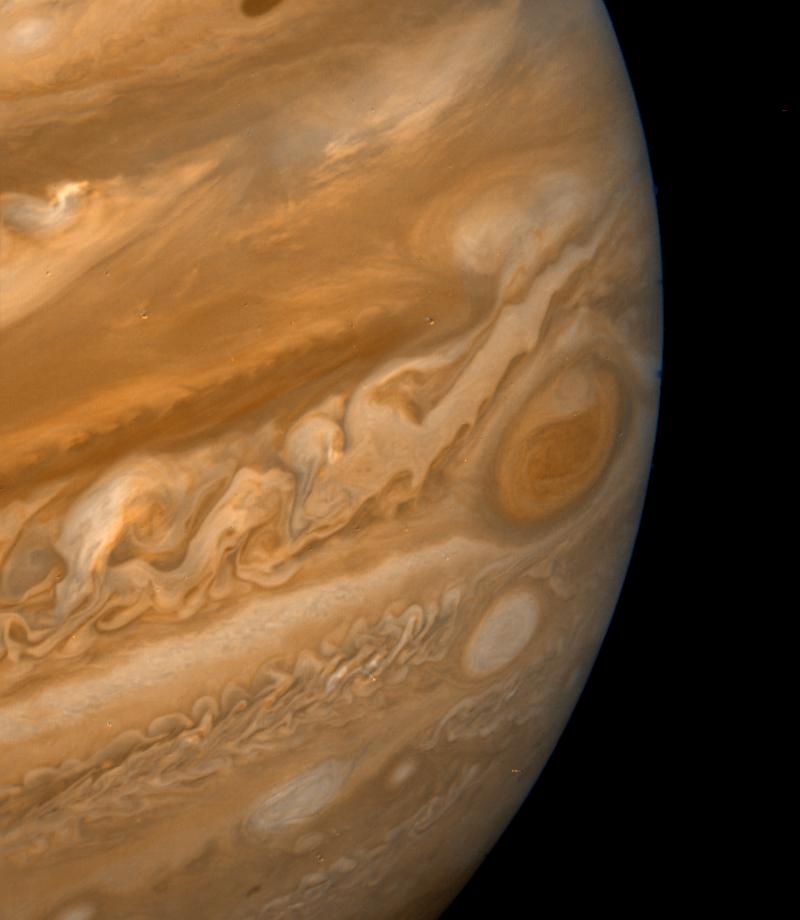
Voyager 2 began transmitting images of Jupiter April 24, 1979, for time-lapse movies of atmospheric circulation. Unlike Voyager 1, Voyager 2 made close passes to the Jovian moons on its way into the system, with scientists especially interested in more information from Europa and Io (which necessitated a 10 hour-long “volcano watch”).
During its encounter, it relayed back spectacular photos of the entire Jovian system, including its moons Callisto, Ganymede, Europa (at a range of about 127,830 miles or 205,720 kilometers, much closer than Voyager 1), Io, and Amalthea, all of which had already been surveyed by Voyager 1.
Voyager 2’s closest encounter to Jupiter was at 22:29 UT July 9, 1979, at a range of about 400,785 miles (645,000 kilometers). It transmitted new data on the planet’s clouds, its newly discovered four moons, and ring system as well as 17,000 new pictures.
When the earlier Pioneers flew by Jupiter, they detected few atmospheric changes from one encounter to the second, but Voyager 2 detected many significant changes, including a drift in the Great Red Spot as well as changes in its shape and color.
With the combined cameras of the two Voyagers, at least 80% of the surfaces of Ganymede and Callisto were mapped out to a resolution of about 3 miles (5 kilometers).
Voyager 2 at Saturn
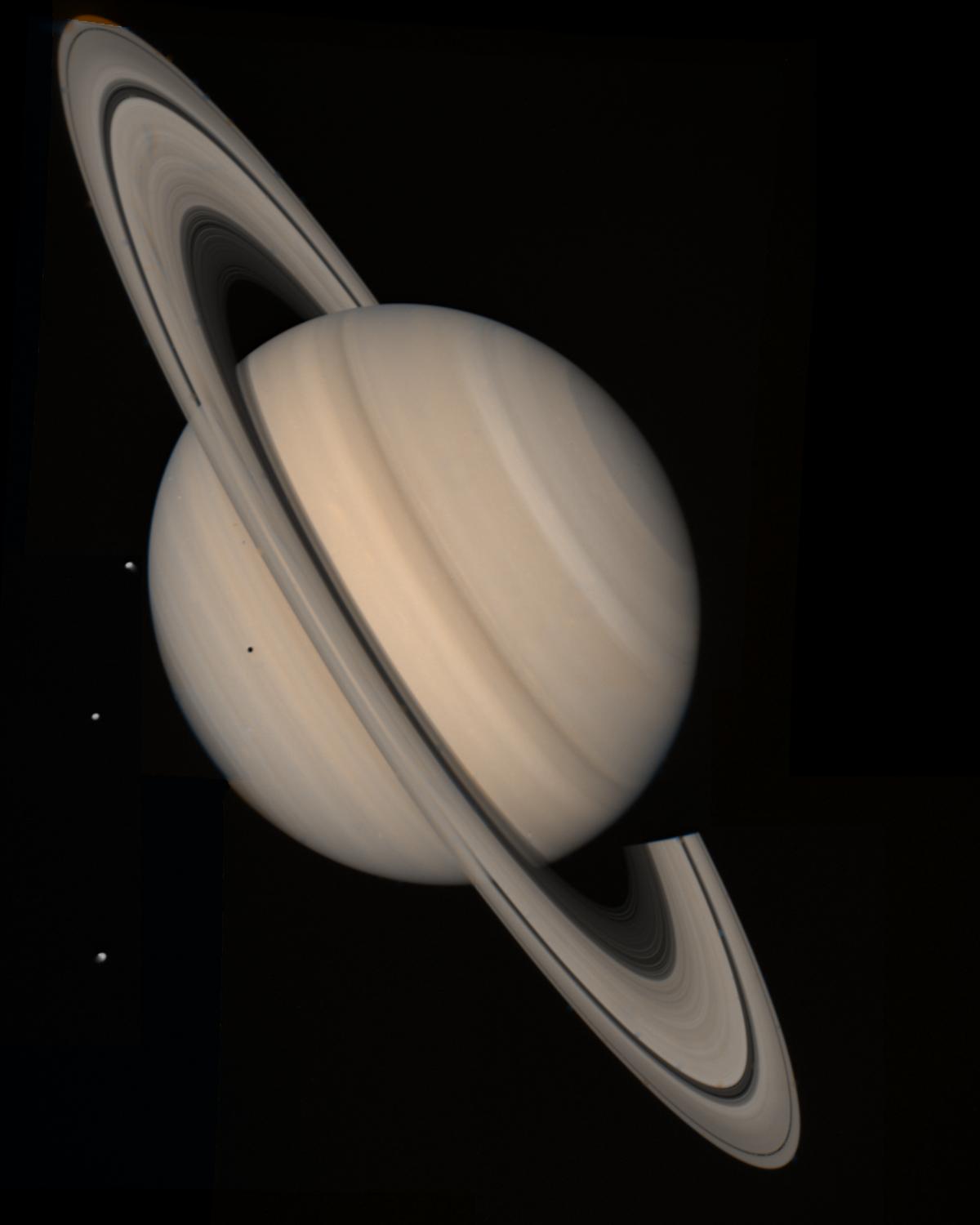
Following a course correction two hours after its closest approach to Jupiter, Voyager 2 sped to Saturn, its trajectory determined to a large degree by a decision made in January 1981, to try to send the spacecraft to Uranus and Neptune later in the decade.
Its encounter with the sixth planet began Aug. 22, 1981, two years after leaving the Jovian system, with imaging of the moon Iapetus. Once again, Voyager 2 repeated the photographic mission of its predecessor, although it actually flew about 14,290 miles (23,000 kilometers) closer to Saturn. The closest encounter to Saturn was at 01:21 UT Aug. 26, 1981, at a range of about 63,000 miles (101,000 kilometers).
The spacecraft provided more detailed images of the ring “spokes” and kinks, and also the F-ring and its shepherding moons, all found by Voyager 1. Voyager 2’s data suggested that Saturn’s A-ring was perhaps only about 980 feet (300 meters) thick.
As it flew behind and up past Saturn, the probe passed through the plane of Saturn’s rings at a speed of 8 miles per second (13 kilometers per second). For several minutes during this phase, the spacecraft was hit by thousands of micron-sized dust grains that created “puff” plasma as they were vaporized. Because the vehicle’s attitude was repeatedly shifted by the particles, attitude control jets automatically fired many times to stabilize the vehicle.
During the encounter, Voyager 2 also photographed the Saturn moons Hyperion (the “hamburger moon”), Enceladus, Tethys, and Phoebe as well as the more recently discovered Helene, Telesto and Calypso.
Voyager 2 at Uranus
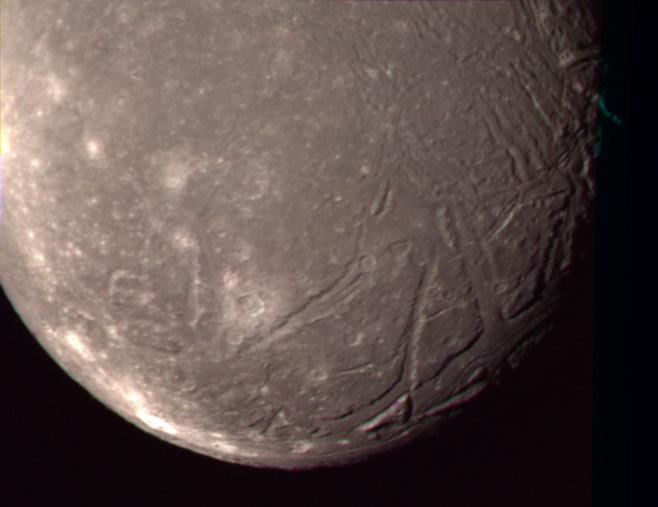
Although Voyager 2 had fulfilled its primary mission goals with the two planetary encounters, mission planners directed the veteran spacecraft to Uranus—a journey that would take about 4.5 years.
In fact, its encounter with Jupiter was optimized in part to ensure that future planetary flybys would be possible.
The Uranus encounter’s geometry was also defined by the possibility of a future encounter with Neptune: Voyager 2 had only 5.5 hours of close study during its flyby.
Voyager 2 was the first human-made object to fly past the planet Uranus.
Long-range observations of the planet began Nov. 4, 1985, when signals took approximately 2.5 hours to reach Earth. Light conditions were 400 times less than terrestrial conditions. Closest approach to Uranus took place at 17:59 UT Jan. 24, 1986, at a range of about 50,640 miles (81,500 kilometers).
During its flyby, Voyager 2 discovered 10 new moons (given such names as Puck, Portia, Juliet, Cressida, Rosalind, Belinda, Desdemona, Cordelia, Ophelia, and Bianca -- obvious allusions to Shakespeare), two new rings in addition to the “older” nine rings, and a magnetic field tilted at 55 degrees off-axis and off-center.
The spacecraft found wind speeds in Uranus’ atmosphere as high as 450 miles per hour (724 kilometers per hour) and found evidence of a boiling ocean of water some 497 miles (800 kilometers) below the top cloud surface. Its rings were found to be extremely variable in thickness and opacity.
Voyager 2 also returned spectacular photos of Miranda, Oberon, Ariel, Umbriel, and Titania, five of Uranus’ larger moons. In flying by Miranda at a range of only 17,560 miles (28,260 kilometers), the spacecraft came closest to any object so far in its nearly decade-long travels. Images of the moon showed a strange object whose surface was a mishmash of peculiar features that seemed to have no rhyme or reason. Uranus itself appeared generally featureless.
The spectacular news of the Uranus encounter was interrupted the same week by the tragic Challenger accident that killed seven astronauts during their space shuttle launch Jan. 28, 1986.
Voyager 2 at Neptune
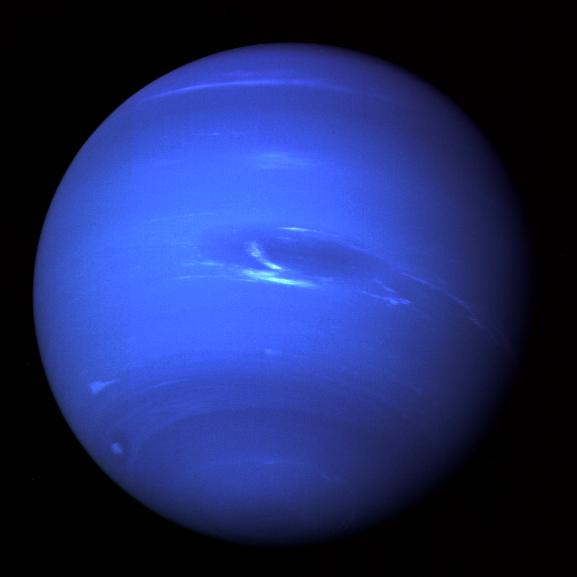
Following the Uranus encounter, the spacecraft performed a single midcourse correction Feb. 14, 1986—the largest ever made by Voyager 2—to set it on a precise course to Neptune.
Voyager 2’s encounter with Neptune capped a 4.3 billion-mile (7 billion-kilometer) journey when, on Aug. 25, 1989, at 03:56 UT, it flew about 2,980 miles (4,800 kilometers) over the cloud tops of the giant planet, the closest of its four flybys. It was the first human-made object to fly by the planet. Its 10 instruments were still in working order at the time.
During the encounter, the spacecraft discovered six new moons (Proteus, Larissa, Despina, Galatea, Thalassa, and Naiad) and four new rings.
The planet itself was found to be more active than previously believed, with 680-mile (1,100-kilometer) per hour winds. Hydrogen was found to be the most common atmospheric element, although the abundant methane gave the planet its blue appearance.
Images revealed details of the three major features in the planetary clouds—the Lesser Dark Spot, the Great Dark Spot, and Scooter.
Voyager photographed two-thirds of Neptune’s largest moon Triton, revealing the coldest known planetary body in the solar system and a nitrogen ice “volcano” on its surface. Spectacular images of its southern hemisphere showed a strange, pitted cantaloupe-type terrain.
The flyby of Neptune concluded Voyager 2’s planetary encounters, which spanned an amazing 12 years in deep space, virtually accomplishing the originally planned “Grand Tour” of the solar system, at least in terms of targets reached if not in science accomplished.
Voyager 2's Interstellar Mission
Once past the Neptune system, Voyager 2 followed a course below the ecliptic plane and out of the solar system. Approximately 35 million miles (56 million kilometers) past the encounter, Voyager 2’s instruments were put in low power mode to conserve energy.
After the Neptune encounter, NASA formally renamed the entire project the Voyager Interstellar Mission (VIM).
Of the four spacecraft sent out to beyond the environs of the solar system in the 1970s, three of them -- Voyagers 1 and 2 and Pioneer 11 -- were all heading in the direction of the solar apex, i.e., the apparent direction of the Sun’s travel in the Milky Way galaxy, and thus would be expected to reach the heliopause earlier than Pioneer 10 which was headed in the direction of the heliospheric tail.
In November 1998, 21 years after launch, nonessential instruments were permanently turned off, leaving seven instruments still operating.
At 9.6 miles per second (15.4 kilometers per second) relative to the Sun, it will take about 19,390 years for Voyager 2 to traverse a single light year.

Asif Siddiqi
Beyond Earth: A Chronicle of Deep Space Exploration
Through the turn of the century, NASA's Jet Propulsion Laboratory (JPL) continued to receive ultraviolet and particle fields data. For example, on Jan. 12, 2001, an immense shock wave that had blasted out of the outer heliosphere on July 14, 2000, finally reached Voyager 2. During its six-month journey, the shock wave had plowed through the solar wind, sweeping up and accelerating charged particles. The spacecraft provided important information on high-energy shock-energized ions.
On Aug. 30, 2007, Voyager 2 passed the termination shock and then entered the heliosheath. By Nov. 5, 2017, the spacecraft was 116.167 AU (about 10.8 billion miles or about 17.378 billion kilometers) from Earth, moving at a velocity of 9.6 miles per second (15.4 kilometers per second) relative to the Sun, heading in the direction of the constellation Telescopium. At this velocity, it would take about 19,390 years to traverse a single light-year.
On July 8, 2019, Voyager 2 successfully fired up its trajectory correction maneuver thrusters and will be using them to control the pointing of the spacecraft for the foreseeable future. Voyager 2 last used those thrusters during its encounter with Neptune in 1989.
The spacecraft's aging attitude control thrusters have been experiencing degradation that required them to fire an increasing and untenable number of pulses to keep the spacecraft's antenna pointed at Earth. Voyager 1 had switched to its trajectory correction maneuver thrusters for the same reason in January 2018.
To ensure that both vintage robots continue to return the best scientific data possible from the frontiers of space, mission engineers are implementing a new plan to manage them. The plan involves making difficult choices, particularly about instruments and thrusters.

National Space Science Data Center: Voyager 2
A library of technical details and historic perspective.

A comprehensive history of missions sent to explore beyond Earth.
Discover More Topics From NASA

The Voyager 20 is a 20.5ft fractional sloop designed by Herb Stewart / International Marine and built in fiberglass by International Marine (USA) since 2013.
The Voyager 20 is a light sailboat which is a reasonably good performer. It is stable / stiff and has a low righting capability if capsized. It is best suited as a day-boat.
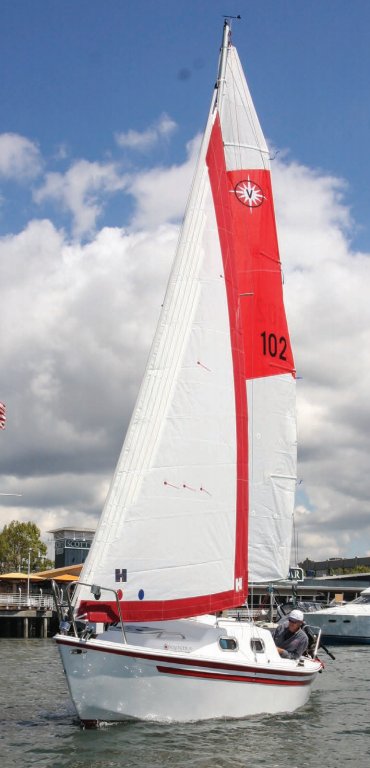
Voyager 20 for sale elsewhere on the web:

Main features
Login or register to personnalize this screen.
You will be able to pin external links of your choice.

See how Sailboatlab works in video

We help you build your own hydraulic steering system - Lecomble & Schmitt

Accommodations
Builder data, modal title.
The content of your modal.
Personalize your sailboat data sheet
Great choice! Your favorites are temporarily saved for this session. Sign in to save them permanently, access them on any device, and receive relevant alerts.
- Sailboat Guide
Voyager 20 is a 20 ′ 6 ″ / 6.3 m monohull sailboat designed by Herb Stewart and built by International Marine starting in 2013.
Rig and Sails
Auxilary power, accomodations, calculations.
The theoretical maximum speed that a displacement hull can move efficiently through the water is determined by it's waterline length and displacement. It may be unable to reach this speed if the boat is underpowered or heavily loaded, though it may exceed this speed given enough power. Read more.
Classic hull speed formula:
Hull Speed = 1.34 x √LWL
Max Speed/Length ratio = 8.26 ÷ Displacement/Length ratio .311 Hull Speed = Max Speed/Length ratio x √LWL
Sail Area / Displacement Ratio
A measure of the power of the sails relative to the weight of the boat. The higher the number, the higher the performance, but the harder the boat will be to handle. This ratio is a "non-dimensional" value that facilitates comparisons between boats of different types and sizes. Read more.
SA/D = SA ÷ (D ÷ 64) 2/3
- SA : Sail area in square feet, derived by adding the mainsail area to 100% of the foretriangle area (the lateral area above the deck between the mast and the forestay).
- D : Displacement in pounds.
Ballast / Displacement Ratio
A measure of the stability of a boat's hull that suggests how well a monohull will stand up to its sails. The ballast displacement ratio indicates how much of the weight of a boat is placed for maximum stability against capsizing and is an indicator of stiffness and resistance to capsize.
Ballast / Displacement * 100
Displacement / Length Ratio
A measure of the weight of the boat relative to it's length at the waterline. The higher a boat’s D/L ratio, the more easily it will carry a load and the more comfortable its motion will be. The lower a boat's ratio is, the less power it takes to drive the boat to its nominal hull speed or beyond. Read more.
D/L = (D ÷ 2240) ÷ (0.01 x LWL)³
- D: Displacement of the boat in pounds.
- LWL: Waterline length in feet
Comfort Ratio
This ratio assess how quickly and abruptly a boat’s hull reacts to waves in a significant seaway, these being the elements of a boat’s motion most likely to cause seasickness. Read more.
Comfort ratio = D ÷ (.65 x (.7 LWL + .3 LOA) x Beam 1.33 )
- D: Displacement of the boat in pounds
- LOA: Length overall in feet
- Beam: Width of boat at the widest point in feet
Capsize Screening Formula
This formula attempts to indicate whether a given boat might be too wide and light to readily right itself after being overturned in extreme conditions. Read more.
CSV = Beam ÷ ³√(D / 64)
Hull based on the WEST WIGHT POTTER 19. (in turn, a later version was the HMS 18.) Ballast includes 55 lb. centerboard.
Embed this page on your own website by copying and pasting this code.
- About Sailboat Guide
©2024 Sea Time Tech, LLC
This site is protected by reCAPTCHA and the Google Privacy Policy and Terms of Service apply.

- The Contents
- The Making of
- Where Are They Now
- Frequently Asked Questions
- Q & A with Ed Stone
golden record
Where are they now.
- frequently asked questions
- Q&A with Ed Stone
mission / science
Planetary voyage.
The twin spacecraft Voyager 1 and Voyager 2 were launched by NASA in separate months in the summer of 1977 from Cape Canaveral, Florida. As originally designed, the Voyagers were to conduct closeup studies of Jupiter and Saturn, Saturn's rings, and the larger moons of the two planets.
To accomplish their two-planet mission, the spacecraft were built to last five years. But as the mission went on, and with the successful achievement of all its objectives, the additional flybys of the two outermost giant planets, Uranus and Neptune, proved possible -- and irresistible to mission scientists and engineers at the Voyagers' home at the Jet Propulsion Laboratory in Pasadena, California.
As the spacecraft flew across the solar system, remote-control reprogramming was used to endow the Voyagers with greater capabilities than they possessed when they left the Earth. Their two-planet mission became four. Their five-year lifetimes stretched to 12 and is now near thirty-seven years.
Eventually, between them, Voyager 1 and 2 would explore all the giant outer planets of our solar system, 48 of their moons, and the unique systems of rings and magnetic fields those planets possess.
Had the Voyager mission ended after the Jupiter and Saturn flybys alone, it still would have provided the material to rewrite astronomy textbooks. But having doubled their already ambitious itineraries, the Voyagers returned to Earth information over the years that has revolutionized the science of planetary astronomy, helping to resolve key questions while raising intriguing new ones about the origin and evolution of the planets in our solar system.
History Of The Voyager Mission
The Voyager mission was designed to take advantage of a rare geometric arrangement of the outer planets in the late 1970s and the 1980s which allowed for a four-planet tour for a minimum of propellant and trip time. This layout of Jupiter, Saturn, Uranus and Neptune, which occurs about every 175 years, allows a spacecraft on a particular flight path to swing from one planet to the next without the need for large onboard propulsion systems. The flyby of each planet bends the spacecraft's flight path and increases its velocity enough to deliver it to the next destination. Using this "gravity assist" technique, first demonstrated with NASA's Mariner 10 Venus/Mercury mission in 1973-74, the flight time to Neptune was reduced from 30 years to 12.
While the four-planet mission was known to be possible, it was deemed to be too expensive to build a spacecraft that could go the distance, carry the instruments needed and last long enough to accomplish such a long mission. Thus, the Voyagers were funded to conduct intensive flyby studies of Jupiter and Saturn only. More than 10,000 trajectories were studied before choosing the two that would allow close flybys of Jupiter and its large moon Io, and Saturn and its large moon Titan; the chosen flight path for Voyager 2 also preserved the option to continue on to Uranus and Neptune.
From the NASA Kennedy Space Center at Cape Canaveral, Florida, Voyager 2 was launched first, on August 20, 1977; Voyager 1 was launched on a faster, shorter trajectory on September 5, 1977. Both spacecraft were delivered to space aboard Titan-Centaur expendable rockets.
The prime Voyager mission to Jupiter and Saturn brought Voyager 1 to Jupiter on March 5, 1979, and Saturn on November 12, 1980, followed by Voyager 2 to Jupiter on July 9, 1979, and Saturn on August 25, 1981.
Voyager 1's trajectory, designed to send the spacecraft closely past the large moon Titan and behind Saturn's rings, bent the spacecraft's path inexorably northward out of the ecliptic plane -- the plane in which most of the planets orbit the Sun. Voyager 2 was aimed to fly by Saturn at a point that would automatically send the spacecraft in the direction of Uranus.
After Voyager 2's successful Saturn encounter, it was shown that Voyager 2 would likely be able to fly on to Uranus with all instruments operating. NASA provided additional funding to continue operating the two spacecraft and authorized JPL to conduct a Uranus flyby. Subsequently, NASA also authorized the Neptune leg of the mission, which was renamed the Voyager Neptune Interstellar Mission.
Voyager 2 encountered Uranus on January 24, 1986, returning detailed photos and other data on the planet, its moons, magnetic field and dark rings. Voyager 1, meanwhile, continues to press outward, conducting studies of interplanetary space. Eventually, its instruments may be the first of any spacecraft to sense the heliopause -- the boundary between the end of the Sun's magnetic influence and the beginning of interstellar space.
Following Voyager 2's closest approach to Neptune on August 25, 1989, the spacecraft flew southward, below the ecliptic plane and onto a course that will take it, too, to interstellar space. Reflecting the Voyagers' new transplanetary destinations, the project is now known as the Voyager Interstellar Mission.
Voyager 1 has crossed into the heliosheath and is leaving the solar system, rising above the ecliptic plane at an angle of about 35 degrees at a rate of about 520 million kilometers (about 320 million miles) a year. (Voyager 1 entered interstellar space on August 25, 2012.) Voyager 2 is also headed out of the solar system, diving below the ecliptic plane at an angle of about 48 degrees and a rate of about 470 million kilometers (about 290 million miles) a year.
Both spacecraft will continue to study ultraviolet sources among the stars, and the fields and particles instruments aboard the Voyagers will continue to explore the boundary between the Sun's influence and interstellar space. The Voyagers are expected to return valuable data for at least another decade. Communications will be maintained until the Voyagers' power sources can no longer supply enough electrical energy to power critical subsystems.

Suggested Searches
- Climate Change
- Expedition 64
- Mars perseverance
- SpaceX Crew-2
- International Space Station
- View All Topics A-Z
Humans in Space
Earth & climate, the solar system, the universe, aeronautics, learning resources, news & events.

NASA Wins 6 Webby Awards, 8 Webby People’s Voice Awards

NASA’s CloudSat Ends Mission Peering Into the Heart of Clouds

Hubble Celebrates 34th Anniversary with a Look at the Little Dumbbell Nebula
- Search All NASA Missions
- A to Z List of Missions
- Upcoming Launches and Landings
- Spaceships and Rockets
- Communicating with Missions
- James Webb Space Telescope
- Hubble Space Telescope
- Why Go to Space
- Astronauts Home
- Commercial Space
- Destinations
- Living in Space
- Explore Earth Science
- Earth, Our Planet
- Earth Science in Action
- Earth Multimedia
- Earth Science Researchers
- Pluto & Dwarf Planets
- Asteroids, Comets & Meteors
- The Kuiper Belt
- The Oort Cloud
- Skywatching
- The Search for Life in the Universe
- Black Holes
- The Big Bang
- Dark Energy & Dark Matter
- Earth Science
- Planetary Science
- Astrophysics & Space Science
- The Sun & Heliophysics
- Biological & Physical Sciences
- Lunar Science
- Citizen Science
- Astromaterials
- Aeronautics Research
- Human Space Travel Research
- Science in the Air
- NASA Aircraft
- Flight Innovation
- Supersonic Flight
- Air Traffic Solutions
- Green Aviation Tech
- Drones & You
- Technology Transfer & Spinoffs
- Space Travel Technology
- Technology Living in Space
- Manufacturing and Materials
- Science Instruments
- For Kids and Students
- For Educators
- For Colleges and Universities
- For Professionals
- Science for Everyone
- Requests for Exhibits, Artifacts, or Speakers
- STEM Engagement at NASA
- NASA's Impacts
- Centers and Facilities
- Directorates
- Organizations
- People of NASA
- Internships
- Our History
- Doing Business with NASA
- Get Involved
- Aeronáutica
- Ciencias Terrestres
- Sistema Solar
- All NASA News
- Video Series on NASA+
- Newsletters
- Social Media
- Media Resources
- Upcoming Launches & Landings
- Virtual Events
- Sounds and Ringtones
- Interactives
- STEM Multimedia

Sols 4166-4167: A Garden Full of Rocks

European Service Module

Gateway: Frequently Asked Questions

NASA Shares Lessons of Human Systems Integration with Industry

Work Underway on Large Cargo Landers for NASA’s Artemis Moon Missions

NASA Open Science Initiative Expands OpenET Across Amazon Basin

Amendment 11: Physical Oceanography not solicited in ROSES-2024

NASA Data Helps Beavers Build Back Streams

Sols 4164-4165: What’s Around the Ridge-bend?

Sols 4161-4163: Double Contact Science

NASA’s Chandra Releases Doubleheader of Blockbuster Hits

Explore the Universe with the First E-Book from NASA’s Fermi

Dr. Douglas Hudgins

NASA Photographer Honored for Thrilling Inverted In-Flight Image

NASA’s Ingenuity Mars Helicopter Team Says Goodbye … for Now

NASA Langley Team to Study Weather During Eclipse Using Uncrewed Vehicles

NASA’s Near Space Network Enables PACE Climate Mission to ‘Phone Home’

Amendment 10: B.9 Heliophysics Low-Cost Access to Space Final Text and Proposal Due Date.

NASA STEM Artemis Moon Trees

NASA Glenn Joins Big Hoopla STEM Challenge

NASA Mentors, Students Rock FIRST Buckeye Regional

First NASA Mars Analog Crew Nears End of Mission

Diez maneras en que los estudiantes pueden prepararse para ser astronautas

Astronauta de la NASA Marcos Berríos

Resultados científicos revolucionarios en la estación espacial de 2023
Voyager program, news & articles.
NASA’s Voyager Team Focuses on Software Patch, Thrusters
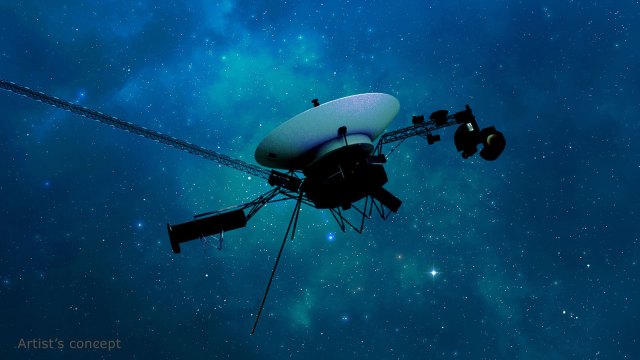
NASA Mission Update: Voyager 2 Communications Pause

NASA’s Voyager Will Do More Science With New Power Strategy
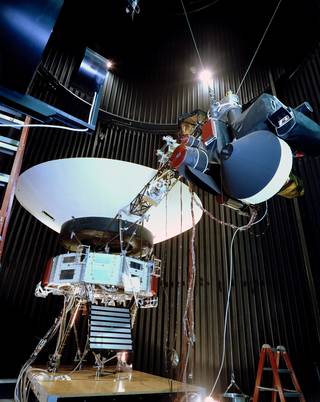
NASA Missions Study What May Be a 1-In-10,000-Year Gamma-ray Burst
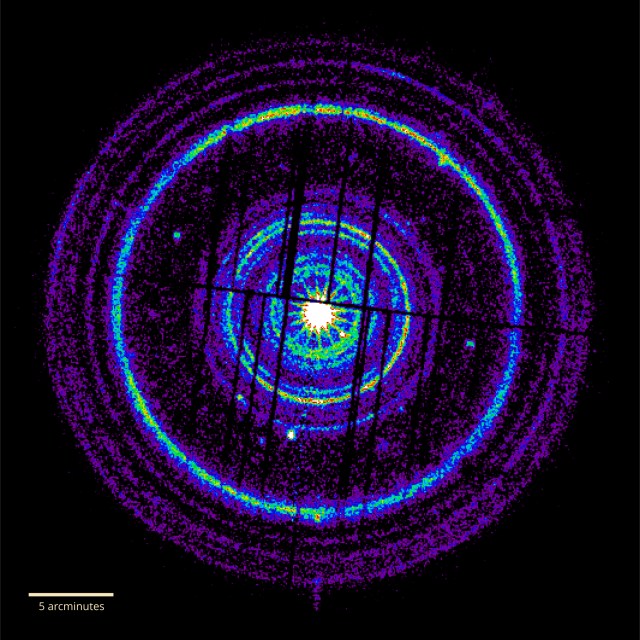
Discover More Topics From NASA

Vertical Motion Simulator (VMS) Technical Details v1


IMAGES
VIDEO
COMMENTS
20 to 30 indicates a coastal cruiser; 30 to 40 indicates a moderate bluewater cruising boat; 40 to 50 indicates a heavy bluewater boat; over 50 indicates an extremely heavy bluewater boat. Comfort ratio = D ÷ (.65 x (.7 LWL + .3 LOA) x Beam^1.33), where displacement is expressed in pounds, and length is expressed in feet. ...
Age: NAS. Mashbill: Undisclosed ... Voyage 20 is a blend of rye based straight bourbon whiskey. NOSE: Rich scents of molasses, maple, caramel, and oak waft up from the glass. There were hints of rye spice here and there as well. (21/25) PALATE: Jefferson's Ocean bourbon was incredibly smooth and balanced. As soon as the whiskey touched out ...
UPDATE, Aug. 4, 2023: NASA has reestablished full communications with Voyager 2. The agency's Deep Space Network facility in Canberra, Australia, sent the equivalent of an interstellar "shout" more than 12.3 billion miles (19.9 billion kilometers) to Voyager 2, instructing the spacecraft to reorient itself and turn its antenna back to Earth.
Captain's Log. OCEAN Voyage 20 left port under clear skies and slight seas. There was a chill in the air at 45° which warmed as the sun rose above the fog bank being held off shore by an off-shore breeze. As the wind increased and the seas became moderate, the bright sun over the ocean gave it a golden glow that shimmered across the tops of ...
Quarta show.
Instalação de suspensão a ar no Voyage nas aro 20. Instalação de suspensão a ar no Voyage nas aro 20. About ...
The images were taken at a range of 4.4 million miles from the planet, 4 days and 20 hours before closest approach. The picture shows the Great Dark Spot and its companion bright smudge; on the ...
Aro 20
1.5'. New Jersey. $25,000. Description: This is a 2015 Voyager 20 which is rarely found on the market. A Voyager 20 is a very upgraded Potter 19. This boat has the Blue Water Lay-up. Every option available for the Voyager 20 is included. Some of these options are a roller furler, single handling package, mast raising system, built in 36 quart ...
Aug. 4, 2023. It took an interstellar "shout" across the solar system. But NASA's Jet Propulsion Laboratory said on Friday that it re-established full communications with Voyager 2, an aging ...
Key Features. Intel® Xeon® Processor D-1539 Broadwell-DE 8-Core Processor, with up to 96GB of RAM. Removable NVMe Voyager Ignition Key (VIK+) Supporting RAID Levels 0, 1, 10, 5, 50, 6, 60. Removable 8-drive cassette with SAS / SATA support, each with 12Gb/s or 6Gb/s respectively. Support for an additional eight SSDs via two Mini-SAS HD ...
Voyager 2 launched on Aug. 20, 1977, quickly followed by Voyager 1 on Sept. 5. Both probes traveled to Jupiter and Saturn, with Voyager 1 moving faster and reaching them first. Together, the probes unveiled much about the solar system's two largest planets and their moons. Voyager 2 also became the first and only spacecraft to fly close to ...
This is a real-time indicator of Voyager 1's distance from Earth in astronomical units (AU) and either miles (mi) or kilometers (km). Note: Because Earth moves around the sun faster than Voyager 1 is speeding away from the inner solar system, the distance between Earth and the spacecraft actually decreases at certain times of year.
If you are a boat enthusiast looking to get more information on specs, built, make, etc. of different boats, then here is a complete review of VOYAGER 20. Built by International Marine (USA) and designed by Herb Stewart, the boat was first built in 2013. It has a hull type of Keel/Cbrd. and LOA is 6.25. Its sail area/displacement ratio 16.85.
Voyager 1 and its twin Voyager 2 are the only spacecraft ever to operate outside the heliosphere, the protective bubble of particles and magnetic fields generated by the Sun. Voyager 1 reached the interstellar boundary in 2012, while Voyager 2 (traveling slower and in a different direction than its twin) reached it in 2018.
This TrueNAS SCALE 20.10 version is also intended for tech-savvy enthusiasts who have a single node, a backup plan, and a willingness to resolve any issues they find. The 20.12 version to be released in December is intended for multi-node expansion. In 2021, TrueNAS SCALE is expected to get to full RELEASE quality for a clustered system.
Voyager 2 is the only spacecraft to study all four of the solar system's giant planets at close range. Voyager 2 discovered a 14th moon at Jupiter. Voyager 2 was the first human-made object to fly past Uranus. At Uranus, Voyager 2 discovered 10 new moons and two new rings. Voyager 2 was the first human-made object to fly by Neptune.
The Voyager 20 is a 20.5ft fractional sloop designed by Herb Stewart / International Marine and built in fiberglass by International Marine (USA) since 2013. The Voyager 20 is a light sailboat which is a reasonably good performer. It is stable / stiff and has a low righting capability if capsized. It is best suited as a day-boat.
A measure of the stability of a boat's hull that suggests how well a monohull will stand up to its sails. The ballast displacement ratio indicates how much of the weight of a boat is placed for maximum stability against capsizing and is an indicator of stiffness and resistance to capsize. Formula. 28.1. <40: less stiff, less powerful.
NASA's Voyager 2 won't retire this year, as expected, but rather spend another three years collecting data from interstellar space. The agency's Jet Propulsion Laboratory (JPL) this week announced ...
Planetary Voyage. The twin spacecraft Voyager 1 and Voyager 2 were launched by NASA in separate months in the summer of 1977 from Cape Canaveral, Florida. As originally designed, the Voyagers were to conduct closeup studies of Jupiter and Saturn, Saturn's rings, and the larger moons of the two planets.
Voyager 20. Voyager 20. Sailboat News. Pocket Cruisers and Trailer-sailers for Every Sailing Style. I've long been a fan of Beneteau's entry-level boats, the First 20 and the First 25. They've been around for decades, receiving numerous design overhauls and styling tweaks along the way to ensure they're reflecting the sailing zeitgeist.
Discover More Topics From NASA. Meetings - 3. START/TAG F2F, March 2024.
Week 20 of 52. Nas Daily thank you so much for your wonderful visit to Greenland. Music: Voyage, Musician: @iksonmusic #greenland #qsgreenland #denmark #independence #Europe #european #travel #EU #passport #alaska #canada #inuit